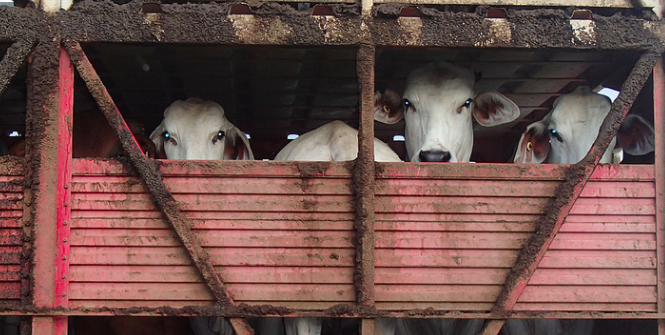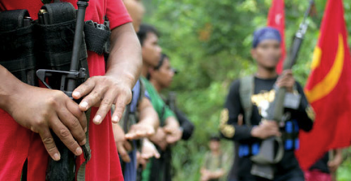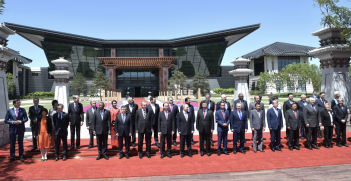Blame Poor Policy, Not Politics, for Jakarta’s 80% Cut in Australian Cattle Imports

This week, the Australian Government announced a new deal to send up to 1 million live cattle to China, on the back of a decision by the Indonesian government has sharply cut quotas for live cattle imports from Australia.
The Indonesian government has sharply cut quotas for live cattle imports from Australia to one-fifth of those in the previous quarter. The reaction in Australia has been mixed. Some, like Opposition Leader Bill Shorten, questioned whether increased tensions between the two countries were a factor in the decision.
Others closer to the industry, like Australian Livestock Exporting Council chief executive Alison Penfold, dismissed the suggestion, saying the decision reflects a stricter implementation of a long-standing – but unsuccessful – Indonesian policy of self-sufficiency. Cutbacks in Australian imports to Indonesia have occurred in the past even when relations were very good.
Some fall in the quota should have been expected after the peak-demand period for beef associated with Ramadan in the previous quarter. This would have happened regardless of any political payback or stricter self-sufficiency policy.
If the policy is to be more strictly applied then it makes more sense to do this after Ramadan when demand is lower. In 2013, the Agriculture Ministry tightened the import policy before Ramadan. The resultant high beef prices from insufficient imports angered consumers and led to the Trade Ministry, which was put in charge of a one-stop shop on the issue, overriding the Agriculture Ministry and increasing the quota.
Very high prices also encouraged the slaughter of breeding cattle by poor farmers with short investment horizons, who make up the majority of the sector. This put the objective of sustainable self-sufficiency even further beyond reach.
It was also announced around the 2013 reforms in the process of setting a quota that a proposed reference price mechanism (imports will be increased if prices get too high) would be developed. However, such a mechanism will face the same short-term problems experienced in 2013. The market had little notice of an increase in quotas (eight to 12 months would be ideal) and these could not be filled.
More evidence against political payback
Indonesian Trade Minister Rachmat Gobel made a statement, following Australia’s reaction this week, that evidence of low (difficult to measure) stocks and rising prices could lead to an increase in the quota, perhaps up to 200,000 head from the current 50,000. Such an increase would be based on the reference price mechanism. This is further evidence for the decision being based on a self-sufficiency policy rather than political payback.
If the political explanation also holds true then it would be expected that constraints would have been applied to other important trades. That has happened in the past. For instance, Australian horticultural imports were forced to enter through a port some distance from the main Jakarta market.
Why is the issue of why the quota was cut important? One reason is that this will influence whether the response is more about diplomacy or economic in nature, such as policies to facilitate restructuring of the industry. Such adjustments are easier at the Australian end, when world demand and prices for cattle and beef are high as they are now.
One key principle of good trade policy, often overlooked, is that it should relate to trade and not diplomacy, the environment, labour or other non-trade issues. Such issues are best addressed more directly with diplomatic, environmental and labour policies.
How should Indonesia achieve its goals?
There needs to be less government involvement in the live cattle trade as with other commodities like grains.
Government involvement has only led to increased uncertainty, higher economic costs, shrinkage of the market and greater opportunities for trying to leverage non-trade policies off trade policies. Examples include environmental policy in the case of Australia and self-sufficiency in the case of Indonesia.
Self-sufficiency is also best promoted more directly through policies aimed at improving breeding, feeding efficiency etc – say via increased research and development – not through trade constraints. Interest rate subsidies have been applied up to now, but have been shown to be a very costly and ineffective policy approach for stimulating increased production. Such subsidies need to be around A$1 billion a year to be effective but then involve half this amount in welfare losses.
Greater integration through investment and technical transfer that takes account of each country’s comparative advantages – Australia’s live cattle trade and Indonesia’s cattle feeding and processing industries – could better meet Indonesia’s beef security goals, including in terms of sustainability. This would also present strong processed meat opportunities in rich neighbours to the benefit of all countries involved.
A continuation of the recent volatile and uncertain trade will be to the detriment of both countries. Indonesia would lose a food-secure, reliable livestock supply to which value was added for the off chance of becoming self-sufficient but with higher prices and economic costs plus lower consumption. Australia would exit a significant trade for other costlier but more certain markets.
Ray Trewin is Visiting fellow, Crawford School of Public Policy at Australian National University. This article was originally published in The Conversation on July 17, 2015. It is republished with permission.





